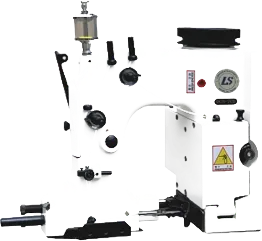Tips for Using a Twin Needle on Your Sewing Machine Successfully
Using a Twin Needle on a Sewing Machine A Comprehensive Guide
Sewing can be an incredibly rewarding hobby, allowing for creativity and self-expression through fabric and thread. Among the myriad tools available to sewists, one that stands out for its ability to enhance the sewing experience is the twin needle. This specialized needle can transform your standard sewing machine into a powerful tool for creating professional-looking hems, decorative stitches, and more. In this article, we'll explore what a twin needle is, how to use it, and some tips to make the most out of your sewing projects.
What is a Twin Needle?
A twin needle, as its name suggests, has two needle points attached to a single shank. This allows you to sew two parallel lines of stitching at once, creating a unique and polished finish. Twin needles come in different widths and sizes, giving you options for various sewing projects. Typically, they are available in sizes like 1.6mm, 2.0mm, and 4.0mm, with one needle being slightly larger than the other. The larger the needle size, the farther apart the two needle points will be.
Setting Up Your Sewing Machine for a Twin Needle
Before you can start sewing, it's essential to prepare your machine correctly. Here’s how to set it up
1. Select the Right Needle Choose the appropriate twin needle for your project. A wider needle is perfect for topstitching on thicker fabrics, while a narrower one is suitable for lighter materials.
2. Install the Twin Needle Remove the single needle from your machine and replace it with the twin needle. Ensure that it’s installed securely, with both needle shafts in the needle clamp.
3. Adjust the Threading Unlike a single needle, a twin needle requires two threads. Thread one spool of thread through the regular threading path for your sewing machine. For the second spool, you’ll need to create a separate path. Many machines have a second thread guide on the top of the machine, or you can use a thread stand for more complicated setups.
4. Change the Presser Foot Some sewing machines come with a specific presser foot designed for twin needles. If yours doesn't, ensure that the presser foot can accommodate two threaded needles; this will help prevent any snagging or missed stitches.
using a twin needle on a sewing machine

5. Select the Stitch Certain stitches are more suitable for twin needle use than others. Straight stitches and zigzag stitches generally work well. Make sure to consult your sewing machine manual regarding compatible stitches.
Stitching with a Twin Needle
Once you’re set up, it’s time to start sewing! Here are some tips for getting the best results with a twin needle
- Test on Scrap Fabric Before diving into your main project, it’s always wise to test your settings on a scrap piece of the same fabric. This will help you ensure that both needle points are forming even stitches and that your machine is threaded correctly.
- Use the Right Fabric Twin needles work best on stretchy fabrics like knits or lightweight materials like cotton. Ensure that the fabric is not too thick, as this might cause issues with the needle piercing.
- Sew Slowly Take your time as you sew. This will help you maintain control and ensure that both needle points are working as intended. Going too fast could lead to errors or skipped stitches.
- Adjust Tension Sometimes, you may need to tweak the tension settings of your machine to achieve the best results. If stitches look loose or uneven, adjusting the upper thread tension may help.
Conclusion
Using a twin needle can elevate your sewing projects by adding a professional touch that many enthusiasts strive for. With the proper setup and techniques, you can produce stunning double-stitched hems, add decorative touches to your garments, and complete your projects more efficiently. Whether you’re an experienced sewist or just starting, incorporating a twin needle into your toolkit is a fantastic way to expand your creative horizons. Happy sewing!
-
Boost Production Efficiency with a Pattern Sewing MachineNewsAug.29,2025
-
Industrial Excellence with the Best Heavy Duty Sewing MachineNewsAug.29,2025
-
Precision and Power with the Best Pattern Sewing MachineNewsAug.29,2025
-
Reliable Bulk Packaging Starts With the Right FIBC Sewing MachineNewsAug.29,2025
-
Advanced Packaging Solutions: Elevate Productivity with Jumbo Bag Sewing Machine and Industrial Stitching EquipmentNewsAug.29,2025
-
High-Performance Solutions for Bulk Packaging: FIBC Sewing Machine and MoreNewsAug.29,2025
-
Maximize Efficiency with an Industrial Cylinder Arm Sewing MachineNewsAug.28,2025


























